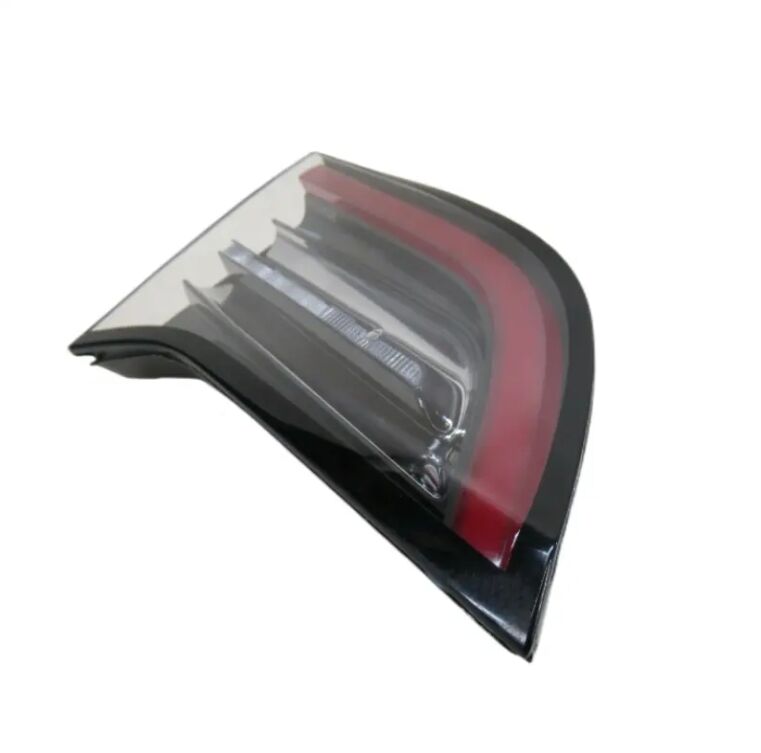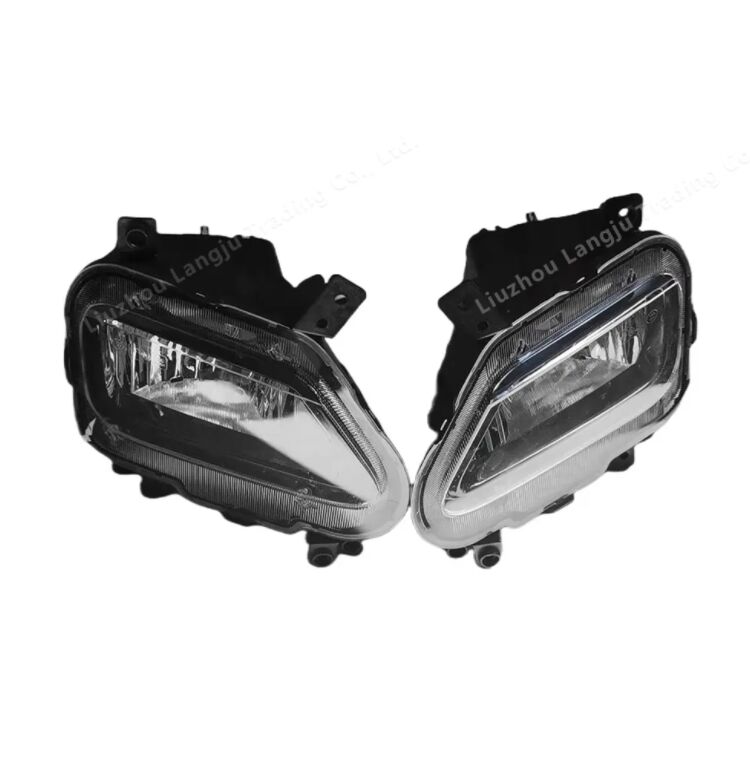מהם הטרנדים האחרונים בעיצוב פנסים אחוריים לרכבים מודרניים?
אורים אחוריים אינם עוד פשוט אורות אדומים בחלק האחורי של הרכב. כיום, הם מהווים רכיב מפתח בזיהוי הרכב, ומשלבים סגנון, טכנולוגיה ובטיחות בדרכים חדשות ומעניינות. עיצובי אורות אחוריים מודרניים חכמים יותר, מושכים יותר ופונקציונליים יותר מאי פעם. בואו נבחן את מגמות העיצוב המובילות שמעצבות את הדרך שבה אורים אחוריים נראים ופועלים ברכב המודרני.
1. פסי אור LED רציפים בכל הרוחב
אחת המגמות הפופולריות ביותר כיום היא פס האור הרציף - פס אור בודד ורציף שמגיע לאורך כל החלק האחורי של הרכב. עיצוב זה יוצר מראה חלק ואחדותי שעושה את הרכב מזוהה מיד.
- מראה חלק ומודרני : במקום פנסים שמאליים וימניים נפרדים, מוט שלם המחבר ביניהם נותן לרכב מראה נקי ועתידי. זה עובד במיוחד טוב עם רכבים חשמליים (EVs), שלרוב בעלי עיצוב חלק ומינימליסטי. לדוגמה, רבים מהדגמים החדשים של רכבים חשמליים מציגים פס דק ומזוהר שמדגיש את עמדת הרכב הרחבה, מה שעושה אותו למראה סגולה ויקר.
- ראות טובה יותר : הקו הארוך והבלתי שבור של אור קל לזיהוי על ידי נהגים אחרים, גם ממרחק גדול. זה מועיל בתאורה נמוכה או מזג אוויר רע, שם פנסים מסורתיים עלולים להתמזג עם הרקע.
- עיצוב גמיש : יצרנים יכולים לעצב את פסי האור כך שיתאימו לעקומיות של הרכב, בין אם מדובר בספורטס קר עם קצוות חדים או ב-SUV משפחתי עגול. חלקם אפילו מציגים עקומים עדינים או דפוסים בתוך המוט כדי להוסיף אישיות מבלי לאבד את המראה חלק.
פסי LED שלמים אינם מיועדים עוד רק לרכב יוקרה - הם מופיעים גם בדגמים זולים יותר, מה שעושה את הטרנד הזה נגיש ליותר נהגים.
2. תאורה דינמית ואנימטיבית
בשכחת הימים של האורות האחוריים הרגילים והמקפצים. כיום, האורות האחוריים יכולים לזוז, להשתנות ואפילו ל"לחות" עם משתמשי הכביש האחרים באמצעות אנימציות.
- אشارות כיוון סדרתיות : במקוםกะפוף פשוט של האור, אורות הכוון זורמים מהמרכז של הרכב לכיוון הצלע. לדוגמה, כאשר אתה מורה על פנייה ימנית, האור נדלק מהאמצע של האור האחורי וזורם לכיוון הימין. האפקט הזה, ה"זרימה", מורגש יותר מאשרกะפוף רגיל, ועוזר לנהגים האחרים להבין מה הפעולה הבאה שלך מהר יותר.
- אורות בלם מתאימים : כאשר אתה לוחץ חזק על הבלם, חלק מהאורים האחוריים ניצנצים מהר מהרגיל או הופכים לוהטים יותר. זה מתריע לנהגים מאחור שעצרת בפתע, נותן להם יותר זמן להגיב ולמנוע תאונה. בבלימה רגילה, האור נשאר קבוע - אין צורך בניצנוץ נוסף.
- רצפי קבלה ופרידה כשאתה פותח את הרכב שלך, האורות האחוריים עשויים להאיר בדפוס ייחודי, כמו ניצוץ איטי או גל. כשנסגרים, הם עשויים להירגע בהדרגה. זה מוסיף נגיעה כיפית ואישית, וגורם לרכב להרגיש יותר כמו עמית מאשר רק מכונה.
אנימציות אלו אפשריות מכיוון שאורות אחוריים מודרניים משתמשים ב-LED קטנים ובנפרד שאפשר לשלוט בהם בנפרד - כמו פיקסלים על מסך.
3. טכנולוגיית OLED לאלות חדות וגזירות
טכנולוגיית OLED (דיודה אורגנית פולטת אור) הופכת להיות נפוצה יותר באורות אחוריים, ועם סיבה טובה. בניגוד ל-LED המסורתיים, OLED דקים, גמישים ומייצרים אור אחיד, ברקע גבוה.
- דקים וקלילים : ה-OLED דקים כל כך שניתן לבנות אותם בפאות עקומות או אפילו לכסות את קצות הרכב. זה מאפשר למפתחים ליצור אורות אחוריים המשלבים חלק חלק בגוף הרכב, במקום להיראות כחלקים נפרדים שנדבקו בסוף.
- ניגודיות ובהירות גבוהים : פאנלי OLED יכולים להדליק וכיבוי במהירות, ומייצרים שחור עמוק כשמחוברים, מה שעושה את האור האדום בולט יותר. הניגודיות החדה הזו הופכת את האורות האחוריות לקלים יותר לראייה, במיוחד בשמש חזקה.
- שליטה מקטעית : פאנלי OLED ניתן לחלק לקטעים קטנים, שכל אחד מהם ניתן לשלוט בו בנפרד. זה אומר שחלק מהאור האחורית יכול להיות בהיר, חלק מעומעם או חלק כבוי - מה שמאפשר תבניות מורכבות. לדוגמה, האור האחורית של רכב עשוי להציג סמל אזהרה קטן אם יש סיכון קדימה, כמו רכב עצור או הולך רגל.
למרות ש-OLEDs יקרים יותר מ-LEDs רגילים, המראה והפונקציונליות הייחודית שלהם הופכת אותם למועדפים ברכבים מתקדמים, ומחירם יורד בהדרגה ככל שהתפיסה הטכנולוגית הופכת לנגישה יותר.

4. שילוב עם תכונות ביטחון
האורות האחוריות פועלות כעת בשילוב עם מערכות רכב אחרות כדי להגביר את הבטחה, במיוחד כשמתקדמים בפיתוח רכבים עם טכנולוגיות עזר לנהיגה.
- חיבור לחיישנים : חלק מהאורות האחוריים מחוברים למצלמות והחיישנים של הרכב. לדוגמה, אם החיישנים האחוריים של הרכב מגלים אופני קרובים מהצד, האור האחורית עשוי לבהור בדפוס מסוים כדי להזהיר את רוכב האופניים שהדלת עומדת להיפתח.
- תקשורת עם מערכות אוטונומיות : ברכבים עם תכונות נהיגה אוטונומית, האורות האחוריים יכולים להורות מה הרכבת עומדת לעשות. אם הרכב עומד לשנות מסלול באופן אוטומטי, האור האחורית עשוי להציג הבזק מהיר ורחב כדי להודיע לנהגים אחרים. זה עוזר לכולם בכביש להבין מה קורה, גם כאשר הנהג אינו בשליטה מלאה.
- התאמה לאוות מזג אוויר : חלק מהאורות האחוריות נעשות בהירות יותר בגשם או ערפל, כשיש חוסר בראיה. ייתכן גם שיהיה להן 'מצב ערפל' מיוחד שפועם את האור בצורה רחבה יותר, כך שלא יתפזרו טיפות המים.
שילוב זה הופך את האורות האחוריים מאמצעי ביטחון פאסיביים לכלי פעילים שיכולים לעזור למנוע תאונות.
5. התאמה לסגנון אישי
בעלים רוצים שהרכב שלהם ית distinguished, ואורות האות האחוריות משתתפות בפעולה עם דרכים רבות יותר להעניק לו מראה אישי.
- חתימות אור ניתן להחלפה : בחלק מהמכוניות ניתן לבחור בין דפוסי אור שונים באורות האות באמצעות מערכת הבידור. לדוגמה, ניתן לבחור באור עדין וכחול לנהיגה יומומת או באור בוהיר ועוזר ליציאות ללילה. האפשרויות נשמרות בפרופיל הנהג, כך שהמכונית זוכרת את הבחירה שלך.
- הארות צבעוניות (בתוך גבולות) : למרות שחוקי התעבורה דורשים שאורות האות ישארו אדומות (לצורך ביטחון), בחלק מהעיצובים מוסיפים פרטים קטנים בצבעים אחרים – לדוגמה, פripe לבן או כתום בקצה – כדי להתאים את המראה הכללי של הרכב. הפרטים עדינים אך מוסיפים נגיעה ייחודית.
- אפשרויות שוק אחר : עבור נהגים שרוצים לשדרג, קיימות אורות אות רבות באחר-המכירה. הן משתרעות ממחלפות LED פשוטות ועד פסי אור מותאמים אישית שמתאימים לטרנדים המודרניים ביותר, מה שמאפשר למכוניות ישנות לקבל מראה עדכני.
התאמה אישית מאפשרת לנהגים לגרום למכוניות שלהם להרגיש ייחודיות, גם אם הם נוהגים בדגם נפוץ.
6. חומרים ידידותיים לסביבה ויעילות
במהלך המעבר של המכוניות לדייג רציף, עיצוב האורות האחוריים מתקדם בהתאם, עם חומרים ירוקים יותר ותכונות לחיסכון באנרגיה.
- חלקים שניתנים لإعادة מחזור : שרשראות האורות האחוריים היום מורכבות מפלסטיק שניתן להכניסו מחדש למעגל המחזור, מה שמקטין את כמות הפסולת. חלק מהיצרנים אף משתמשים בחומרים שניתן למחזרם לחלוטין בסוף חיי המכונית, במקום שיסתיימו במזבלה.
- דיודות פלואורסצנטיות נמוכות אנרגיה : האורות האחוריים המודרניים משתמשים ב-LED שדורשים כמות מועטה של חשמל כדי לפעול. זה מקטין את העומס על הסוללה של המכונית, ובמכוניות חשמליות, עוזר להאריך מעט את טווח הנסיעה. כל ג'ול של אנרגיה שמחוסכת נוגעת, במיוחד לנהגים שמשתמשים במכונית בנסיעה יומית.
- עיצובים עמידים : האורות האחוריים מיוצרים כך שיארכו שנים, עם התנגדות טובה יותר למים, אבק ולרטיטים. זה אומר שאין צורך להחליף אותם בתדירות, מה שמקטין את מספר האורות הישנים שנשלחים לפח.
שאלות נפוצות
האם תיקון תקליטי האות האחוריות הדינמיות יקר יותר?
ייתכן, מכיוון שהטכנולוגיה מורכבת יותר. אם LED בודד בתקליט האות האחורית הדינמית מתקלקל, עלול להיות צורך להחליף חלק קטן מהפנל במקום ה entirety של האור. עם זאת, מערכות אלו אמינות, ולכן תיקונים הן נדירות.
האם פסי תאורה מלאים הם בטוחים בהתנגשויות מאחור?
כן. הם נועדו להיות עמידים, עם מעטפות הגנה המסוגלות לעמוד במכות. בתאונה, פס האור עשוי להישבר, אך לא יגרום לנזק נוסף לרכב או לנוסעים.
האם אפשר להוסיף תקליטי אות אחוריות דינמיות לרכב ישן?
אולי. חברות אופציונליות מסוימות מוכרות קיטים שמוסיפות אנימציות בסיסיות, כמו אורות כיוון סדרתיים, למודלים ישנים. עם זאת, תזדקקו לבדוק אם הן חוקיות באזורכם – במקומות מסוימים יש חוקים לגבי האופן שבו אורות האות האחוריות יכולים לกะוץ' או לזוז.
האם תקליטי האות האחוריות OLED פועלים גם בסביבות קרות או חמות במיוחד?
כן. OLED נבדק בעבודתו בטמפרטורות קיצוניות, מקור קפוא ועד חום מדברי. הם עמידים יותר לשינויים בטמפרטורה מאשר מנורות מסורתיות, שיכולות להתקלקל במזון קפוא.
האם קשה לנקות את זמני האות האחוריות החדשות?
לא. לרוב יש להן משטחים חלקים ומעוקלים שמנקים בקלות עם בד לח. החומרים גם עמידים בפני אבק וכתמי מים, כך שהן נשמרות נראות טובות עם מאמץ מינימלי.

